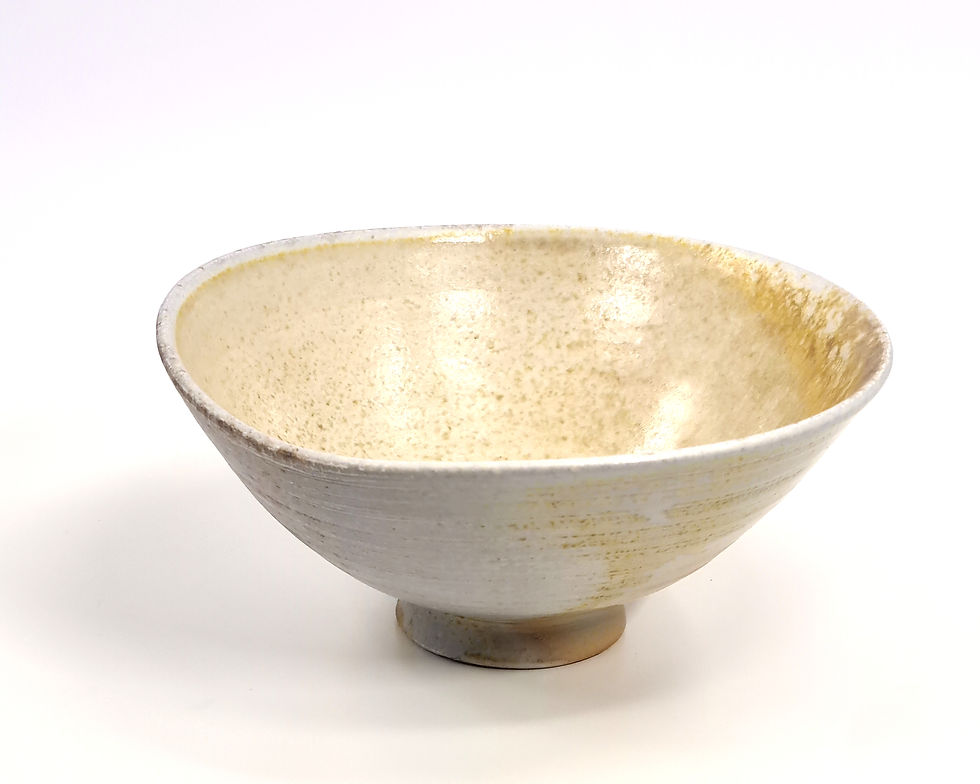This is anagama fired teabowl, chawan. Chawan bowls are nothing like symmetrical Western bowls: they are often asymmetrical, and sometimes even “veiled” with an upper lip in motion. We can rotate them, discovering that each side expresses something different. More an object of contemplation than a utilitarian container, a chawan, dedicated to the tea ceremony in Japan, must be in keeping with the season and the practitioner’s feelings. This is why there exist many styles, shapes and aesthetic aspects. Anagama wood kiln firing provides these bowls with a superb and rare patina that gives them their unique character. Thrown on the wheel, wood fired in Karmazinu Anagama for 114 hours. Features a dramatic array of colors and textures. Excellent sample of anagama reduction effects that creates rugged surface.
Chawan, a “mere” bowl used to serve whipped green tea. Vessel to “simply” enjoy a cup of tea. Yet there is much more than meets the eye when we begin to look at chawan and the subtle nuances it embody, the spirit it reveal.
The bowl can the foot be gripped easily. Why does this matter? The tea host needs to be able to pour the rinse water out of the bowl one-handedly, by placing the left thumb on the lip and the other fingers within the ring of the foot. A foot that is too shallow, or awkwardly made in some way, is to be avoided because there is a very real danger of dropping the bowl and damaging it. Even if you are not interested in tea ceremonies, there is one more consideration. Firstly, the foot should be being level and stable (you don’t want the bowl to rock while you’re whisking!). The dimensions of the bowl are quite appropriate.
The bowl is perfectly good for tea, especially Matcha tea.
W 10.5 cm
H 7.5 cm
Weight 282 gr.
This piece is thrown on the wheel stoneware, high fired to vitrification at 1300 degrees centigrade to eliminate porosity, thus allowing the pieces to be used in the oven, freezer and dishwasher but nevertheless can break from mishandle.
top of page
SKU: AD30
€150.00Price
Product Page: Stores_Product_Widget
bottom of page
















